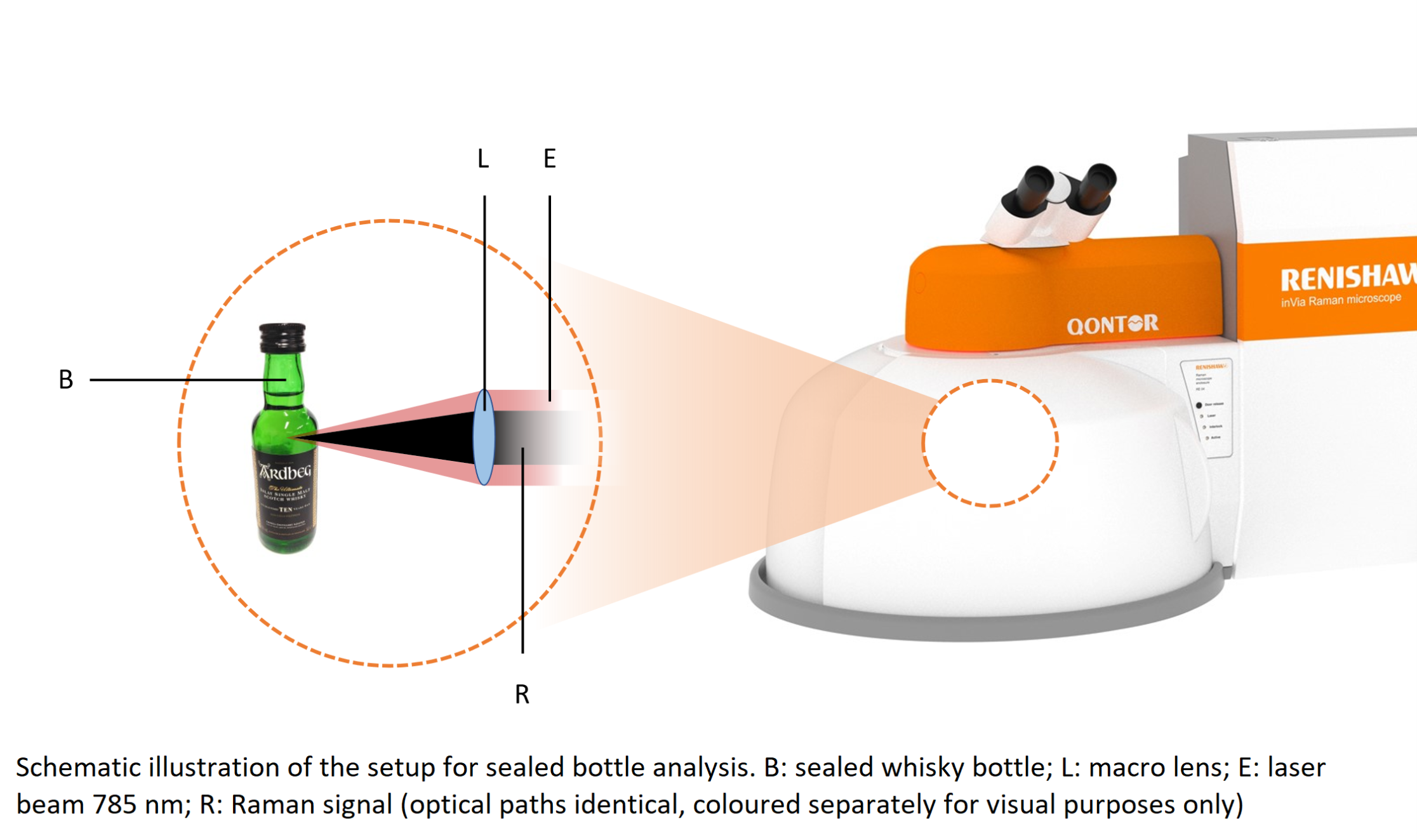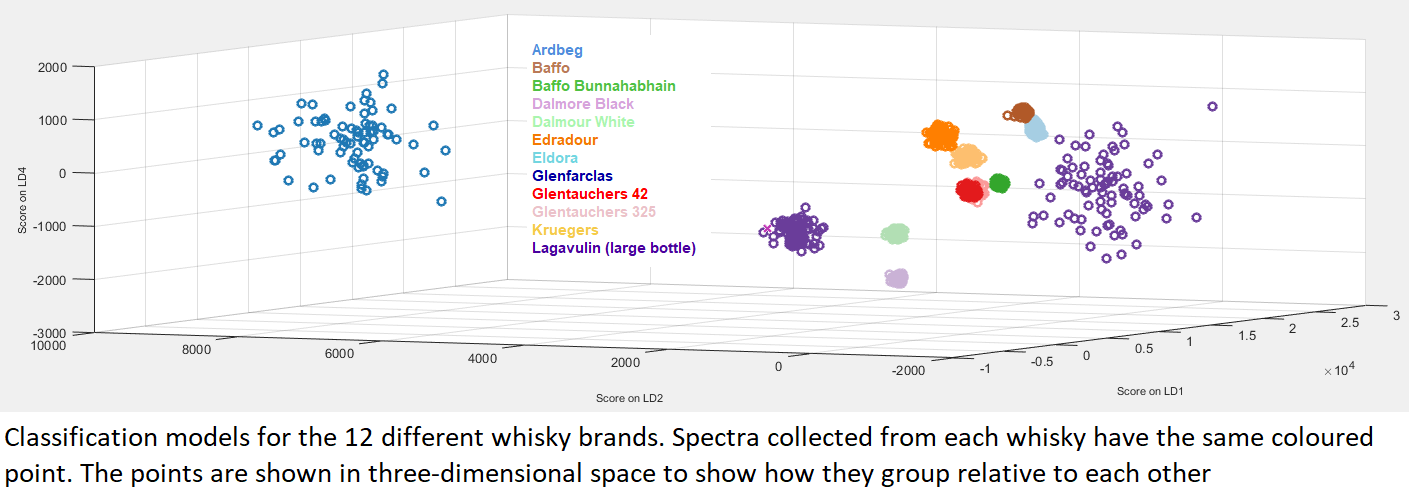Deze pagina is momenteel niet beschikbaar in uw taal. U kunt met behulp van Google Translate een automatische vertaling bekijken. Wij zijn niet verantwoordelijk voor deze dienstverlening en het vertaalresultaat is niet door ons gecontroleerd.
Heeft u meer hulp nodig, neemt u dan contact met ons op.
Classification of whiskies using Raman spectroscopy
For some, whisky is an acquired taste. For others, it embodies all that is enjoyable in experiencing different flavours on the palate. Whiskies have a long history, where even the spelling is subject to debate and varies to different countries. What isn't debatable is the uniqueness of whiskies, where the in-cask ageing is one of the primary contributors to the smell and taste.
Like all desirable and unique products, their value increases with time and rarity, with some whiskies (typically older single malts) costing in excess of £50,000. With such high values, and the contents hidden inside a sealed bottle, it is inevitable that this attracts the attention of forgers. Rare Whisky 101 estimated that “£41 million worth of fakes were circulating on the rare whisky scene in 2019”(1)
Whiskies are big business, so having an objective, scientifically robust, method to evidence the authenticity of the product is important to ensure counterfeits or diluted/mixed products are identified.
Here we show how the inVia Raman microscope has been used to analyse a variety of whiskies through their unopened bottles to evidence their authenticity.

Raman spectroscopy is non-contact and non-destructive, providing detailed chemical information on the range of chemicals within a mixture. As such, the produced chemical fingerprint, the spectrum, provides extreme specificity to a certain combination. In just 10 s, the whisky fingerprint could be collected, through the unopened bottle, and checked against other known varieties to accurately confirm its authenticity.
An inVia Raman microscope, configured with a macro lens with 90° adapter, was used to collect spectra from 12 different whisky brands, focussing through the glass of an unopened bottle. The bottles also comprised of different coloured glasses. Multiple Raman spectra were collected from each known authentic whisky brand.
The inVia Raman system is supported by dedicated classification software, where data from known varieties (gold standards) can be checked against varieties claimed to be equivalent. The Raman spectra from each gold standard whisky were used to generate a classification model.

The model uses principal component analysis and linear discriminate analysis (PCA-LDA) to group spectra based on spectra features unique to each whisky brand. The result is a plot where each whisky brand has a spread of points showing how each can be objectively differentiated.

A bottle of whisky was then supplied to determine the brand using the Renishaw Data Classifier. A single spectrum was collected in 10 s classifying the whisky as Lagavulin when it was actually presented in a bottle from the Ardbeg brand. The whisky was accurately identified even though the Ardbeg bottle was made of a different coloured glass (green) compared to the Lagavulin. This shows how robust the Raman and PCA-LDA technique is, producing fast and accurate identification of the bottle contents.

Next time you take a sip of your favourite tipple, and you savour everything you love about it, think about the detailed chemistry and how modern technology can confirm it's genuine.
Want to know more about what this equipment can do? Check out our other articles or visit www.renishaw.com/ramanapplications
About the author
Tim Smith, Applications Manager

Tim has over 20 year's experience using a range of Raman research instruments. He has extensive knowledge and real-world use of systems in most application areas, however his particular expertise is within Raman imaging and pharmaceutical applications.
Tim spearheaded the application of StreamLine imaging in 2007 to large scale high resolution chemical imaging. His more recent emphasis has been on live focus tracking of materials and correlative chemical and morphological imaging.
Acknowledgments
Thanks to Marc Richter (Renishaw GmbH), for his valuable contribution supplying the data and data analysis.
References
- How to spot a fake whiskey - Decanter